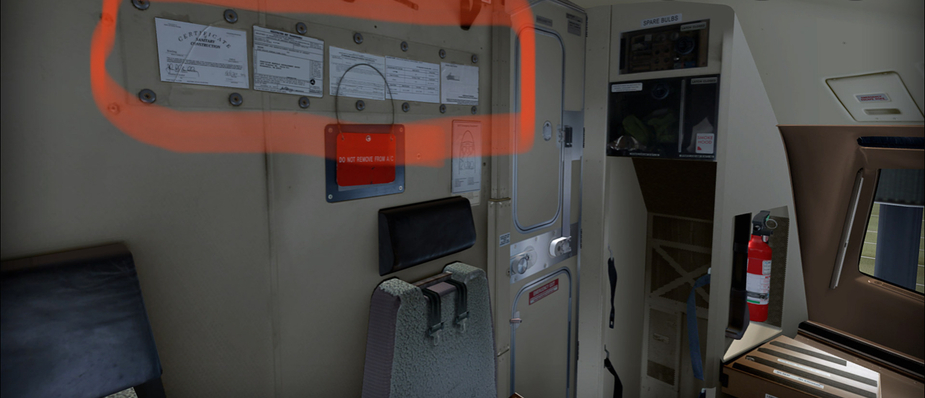Snoopy wrote:
How do you interpret the EASA AMC wording „original“ (number 2 & 3)? Is it the „one and only“ initial original document, no copy allowed? Or could it be a copy of the initial document?
I see it as meaning the actual original which in my experience is what ramp checkers want to see.
What’s the legal basis behind such a check?
It is under the expanded SAFA regs.. Private aircraft are checked more simply but it is under the same system.
I would like to make a folder (offline/analog and digital) that is based on a „red thread“ handling along specifically for ramp checks. We have such guidance for SAFA checks but the inspectors doing those are absolut pros (usually with many years in commercial ops) and never cause any trouble. It seems that is not so on the non commercial level.
I have exactly that. The CofA and CofR are on display in the aircraft but copies of those, licence, medical, insurance, VAT, and LoAs are in the folder.
Thanks jason. US manufactured planes usually have a dedicated „viewing pouch“ for those docs.

On SEPs it’s often found on the right side footrest area. So that passengers can verify it (anecdotal, by a us cfi).
14 CFR 91.203(b) No person may operate a civil aircraft unless the airworthiness certificate … is displayed at the cabin or cockpit entrance so that it is legible to passengers or crew.
In an interpretation given to Leonard A Ceruzzi on 7 Aug 1990 by Daniel P Byrne, Acting Assistant Chief Counsel, Regulations and Enforcement Division, that conjunction was taken as meaning the certificate of airworthiness need not be simultaneously legible to passengers and crew (link).
On a tangent – the “original” Radio License from the FCC (N-reg) is a PDF. There never is a physical piece of paper issued by the relevant authority. To the best of my recollection both the license for the plane and for the pilot. A temporary registration also. The permanent (three year) one comes in the mail as a physical piece of paper, true.
Peter wrote:
They demanded the original pilot logbook, to check if he had currency to carry the other person (an alleged passenger) in the plane.
That’s a bit odd… EASA regs don’t require you to carry the pilot logbook during flight. Does the FAA have that requirement?
Is there a reference stating that the original paper document must be carried?
The obvious problem with such a regulation is that none of these documents have any anti-copy features and they look precisely identical to anything you would knock up in photoshop and print on a laser printer. In fact they are laser printed. This is the “modern problem” which makes a lot of old regulations meaningless.
So no inspector could ever detect that you carry a copy.
I carry a lawyer-certified copy of the certificate of free circulation, and am prepared to accept a grounded aircraft if some “airport policeman” refuses to accept that – because it is worth 20% of the aircraft value, and I cannot get a replacement for that document, ever, at any cost.
Does the FAA have that requirement?
No; it’s complete nonsense.
Peter wrote:
Is there a reference stating that the original paper document must be carried?
Part-NCO states that the CofA and the CofR have to be carried in original. Other documents can be copies (even electronic).
And under the FARs:
§91.203 Civil aircraft: Certifications required.
(a) Except as provided in §91.715, no person may operate a civil aircraft unless it has within it the following:
(1) An appropriate and current airworthiness certificate. Each U.S. airworthiness certificate used to comply with this subparagraph (except a special flight permit, a copy of the applicable operations specifications issued under §21.197(c) of this chapter, appropriate sections of the air carrier manual required by parts 121 and 135 of this chapter containing that portion of the operations specifications issued under §21.197(c), or an authorization under §91.611) must have on it the registration number assigned to the aircraft under part 47 of this chapter. However, the airworthiness certificate need not have on it an assigned special identification number before 10 days after that number is first affixed to the aircraft. A revised airworthiness certificate having on it an assigned special identification number, that has been affixed to an aircraft, may only be obtained upon application to the responsible Flight Standards office.
(2) An effective U.S. registration certificate issued to its owner or, for operation within the United States, the second copy of the Aircraft registration Application as provided for in §47.31(c), a Certificate of Aircraft registration as provided in part 48, or a registration certification issued under the laws of a foreign country.
(b) No person may operate a civil aircraft unless the airworthiness certificate required by paragraph (a) of this section or a special flight authorization issued under §91.715 is displayed at the cabin or cockpit entrance so that it is legible to passengers or crew.
Peter wrote:
They demanded the original pilot logbook, to check if he had currency to carry the other person (an alleged passenger) in the plane.
What was the result? Did the pilot have it? I never carry my pilot logbook on board, a habit ingrained by the flight school during my ab-initio flying training decades ago. I would state as much if ramp checked and insist that there is no requirement to provide it on the spot. If they want to see something specific, I’d agree to email them a copy of the respective pages once back home. How would a pilot with only an electronic logbook respond?
As an electronic only person, I wold ask them to show where there was a requirement to have something printed.
“Original” could be interpreted as the primary source of data (which for me is electronic).
As said a few times, the CAA has accepted (signed) printouts